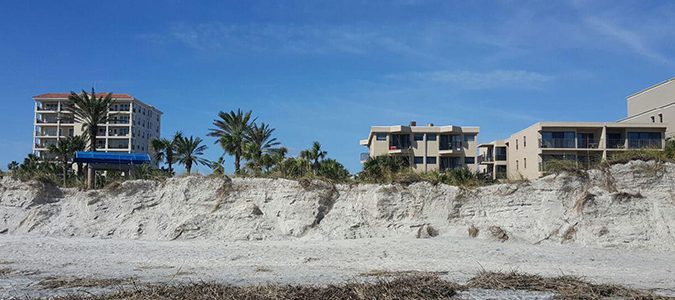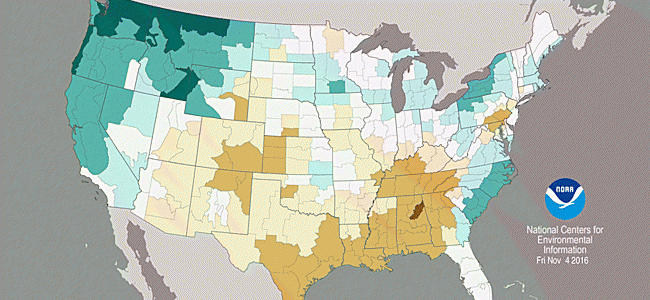-

NOAA has an interesting photo story about how their scientists have been measuring the impacts of Hurricane Matthew on the coasts of the Southeast. This is the first time that the hurricane storm surge modeling scientists have been able to directly observe how well their forecasts did compared to the actual storm surges measured. You…
-

Earlier this fall EPA announced that they have updated their web resources on climate impacts in the Southeast. You can find information on trends in temperature and precipitation around the region as well as projections for future conditions at https://www.epa.gov/climate-impacts/climate-impacts-southeast.
-

The monthly summary for the US for October 2016 came out today and shows that October was the third warmest on record. The year to date total was the second highest on record after 2012. The ranking maps for October and May-October precipitation are shown below and really highlight the dry conditions in parts of…
Posted in: Climate summaries -

The “This Day in Weather History” Facebook page showed an interesting weather graphic today which lists the number of hurricanes which made landfall in the United States during each president’s term. The graphic is from Colorado State University, which noted that so far, “Barack Obama had the fewest U.S. landfalling hurricanes of any 2-term U.S. president…
-

In honor of today’s election day (vote!) here are a few distractions from politics… The WunderBlog discusses today’s weather. Weather won’t be a factor in the election this year, but it has in past years. https://www.wunderground.com/blog/JeffMasters/a-mild-tranquil-election-day-on-tap?__prclt=9DqqTXtI The Weather Channel is doing counterprogramming today for those who are sick of hearing about politics. They are offering…
-

So many places in the Southeast are extremely hot and dry that meteorologists on The Weather Channel are calling it the “Desert Southeast” these days, according to today’s WunderBlog here. Birmingham AL is on day 50 of no rain with no end to the record-setting streak in sight. Many other stations have had little to…
-

Many introductory physics classes show this classic bridge collapse, due to a bridge that was built to be too flexible and which collapsed in high and gusty winds after oscillating wildly back and forth in the Tacoma Narrows in Washington State. You can read about the event and the science behind it at Wikipedia here…
Posted in: History